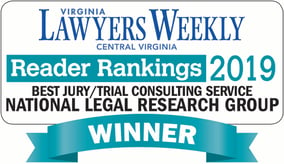November 5, 2012
A relatively new strategy by litigants is to take their cases to the public, not through press conferences but through establishing a voice on the Internet. True, this is not new. Martha Stewart and Michael Jackson had websites that supported their legal cases, and former Chicago Governor Rob Blagoivich had a Facebook page. Discussions of these activities can be found in Chapter 8, Jurors and the Internet, of my book.
Several interesting developments have occurred since the early days of litigant PR websites. First, getting the message out is not as cost-prohibitive as in the early years. It is relatively inexpensive to develop a basic website, and it costs no money to establish a Facebook, MySpace, Google+, or Twitter account. For example, lawyers for George Zimmerman (the person charged in the death of Trayvon Martin) have established websites for information and fundraising, along with a Twitter account for updates and responses to activities concerning the case. While a Facebook page was established by the defense, it was later suspended because of the vitriolic comments posted by supporters and opponents of Mr. Zimmerman. In an interesting twist on the concept of litigant websites, the defendant (Reeco Richardson) in a stolen vehicle case has a website in his subsequent civil lawsuit filed against Maryland state and local officials for the alleged ramming by a police cruiser of a stolen vehicle in which he was a passenger. Attorneys for the defendant asserted that their website was in response to postings of case information on the Montgomery County Police Department website.
Second, current litigant websites often contain much more detailed information than past litigant websites, including court documents and additional materials, potentially including video and audio files, e.g., police on-board camera recordings, agency hearings, and support rallies. The placing of information on the Internet may not stop as trial begins. For example, one defendant in a political corruption trial in 2010 posted tweets from the courtroom during trial commenting on what transpired, including the results of sidebar conferences and commentary on the conduct of participants and witnesses.
Finally, not only may litigants seek a public voice through the Internet, they can actually refine their outreach through the use of Google’s AdWords advertising system. In brief, through the use of Google’s AdWords system, advertisers can bid on placing their websites in the sponsored advertising sections of the Google search page results based on search requests using certain key words. In Bowoto v. Chevron, Chevron did just that. Chevron included the name of the lead plaintiff, Larry Bowoto, so that search results for that name would display the Chevron-sponsored website.
Litigants have argued that these avenues are legitimate free speech and do not prejudice the proceedings. In fact, the lawyer for George Zimmerman claims that such Internet activity had helped to quell tensions surrounding the case. However, prosecutors in the Zimmerman and Reeco cases have objected to the defendants various websites, claiming that such sites could taint potential jurors.
Reactions of courts have been varied. Judge Susan Illston in Bowoto forced Chevron to remove its sponsored links. Recently, Circuit Judge Debra Nelson in the Zimmerman case refused the prosecution's request to issue a gag order, citing the many remedies available to address issues of juror prejudice (i.e., change of venue, individual and sequestered questioning of jurors, and instructions to avoid outside sources of information). The judge denied the prosecution’s motion to close the website for defendant Reeco Richardson. It remained active during his trial, which resulted in the jury convicting the defendant of misdemeanor charges while being hung on the more serious car theft charges.
No matter how the courts eventually address this issue, litigants need to take several concrete steps. First, litigants should conduct searches of the Internet to determine what case-relevant information is present, including party websites and Twitter feeds. Second, Internet searches need to be periodic and ongoing. The Internet sites of concern may not be static and may not be present at all times. A case in point is Bowoto, where the Chevron-sponsored website did not appear until after the jury pool was made aware of the lead plaintiff’s name just prior to jury selection. Third, the potential jurors' Internet usage and habits should be explored on voir dire and/or through supplemental juror questionnaires to establish which potential jurors may be at greater risk of conducting Internet searches. Fourth, potential jurors should be asked directly about whether they have encountered case-relevant information on the Internet, particularly if one of the litigants has an Internet presence or a litigant-relevant web presence. Finally, as noted in my book, and in a previous blog, jurors need to be given strong and detailed instructions concerning the use (or lack thereof) of the Internet during trial, including the consequences for doing so. For a further discussion of this final point, read the blog and associated article by Professor Thaddeus Hoffmeister.



